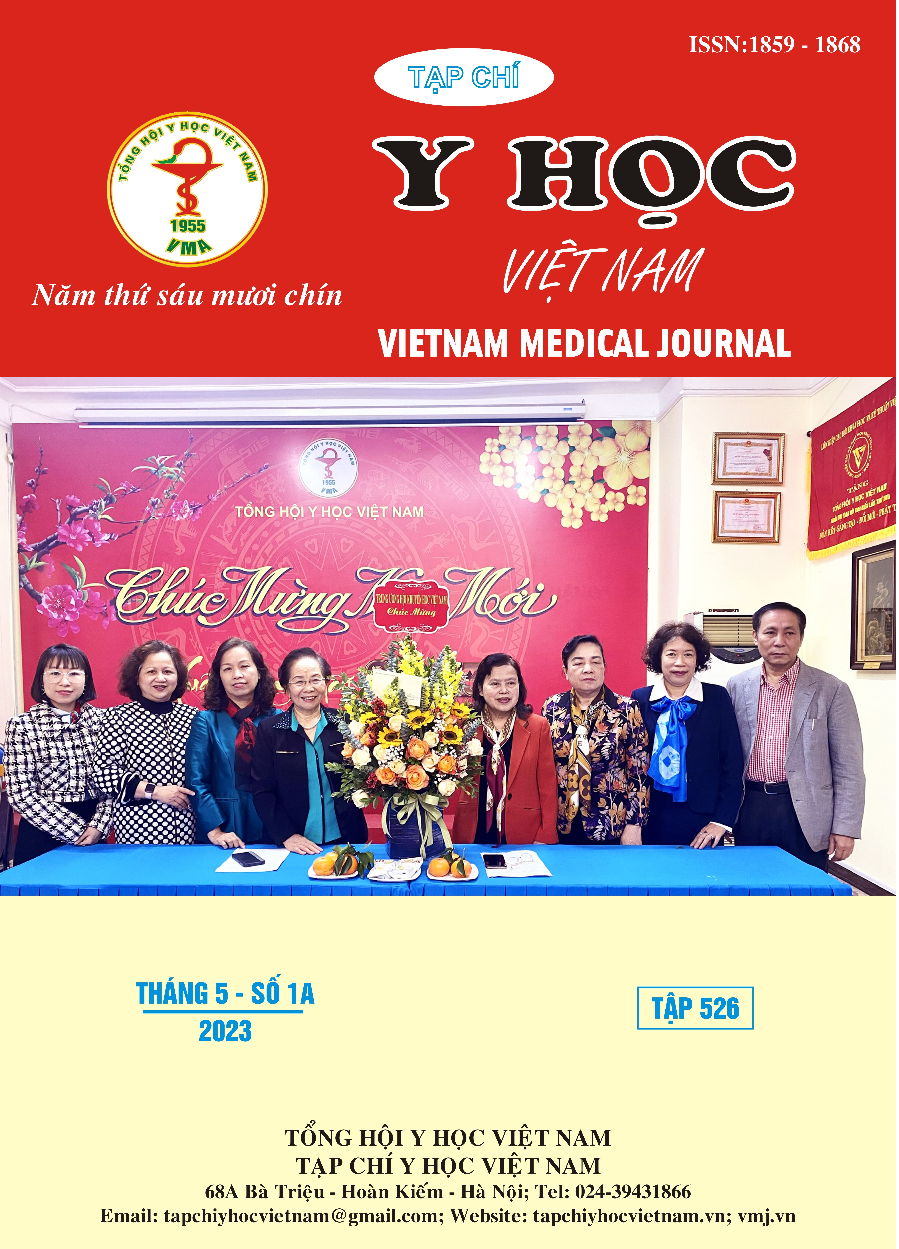ROLE OF REAL - TIME THREE - DIMENSIONAL ECHOCARDIOGRAPHY IN THE ASSESSMENT OF RIGHT VENTRICULAR FUNCTION IN PATIENTS WITH PULMONARY HYPERTENSION
Main Article Content
Abstract
Aims: To evaluate the role of real-time 3D echocardiography (RT3DE) in the assessment of right ventricular (RV) systolic function in patients with pulmonary hypertension in comparison to cardiac magnetic resonance (CMR). Methods: 21 patients diagnosed with pulmonary hypertension were consecutively enrolled in our study. All patients underwent CMR, 2D echocardiography (2DE) and RT3DE. RV systolic function indices measured by 2DE include TAPSE, FAC, RIMP and tissue Doppler-derived tricuspid annular systolic velocity (S’) while right ventricular end diastolic volume (RVEDV), right ventricular end systolic volume (RVESV) and right ventricular eject fraction (RVEF) were measured on 3DE and CMR. Results: 3DE-RVEF had a significant positive correlation with S’(r = 0.462; p = 0.021); t RVFAC (r = 0.601; p = 0.004) and a strong negative correlation with RMPI (r = -0.712; p = 0.012). However, there was no relation between 3DE-RVEF with TAPSE (r = 0.011; p = 0.616). There was a close linear correlation between the value of RVEDV; RVESV and RVEF measured by RT3DE and CMR (r=0.791, p = 0.023; r = 0.802, p = 0.012; r=0.762 p = 0.002, respectively) despite an underestimation of RVEDV and RVESV on RT3DE. Conclusion: 3DE is a reliable method for non-invasive evaluation of right ventricular volumes and systolic function in patients with pulmonary hypertension.
Article Details
Keywords
three-dimensional echocardiography, pulmonary hypertension, right ventricular function, cardiac magnetic resonance.
References
2. Inami, T., et al. (2014), "A new era of therapeutic strategies for chronic thromboembolic pulmonary hypertension by two different interventional therapies; pulmonary endarterectomy and percutaneous transluminal pulmonary angioplasty", PLoS One. 9(4), p. e94587.
3. Kind, T., et al. (2010), "Right ventricular ejection fraction is better reflected by transverse rather than longitudinal wall motion in pulmonary hypertension", J Cardiovasc Magn Reson. 12(1), p. 35.
4. Krishnamurthy, R., et al. (2010), "High temporal resolution SSFP cine MRI for estimation of left ventricular diastolic parameters", J Magn Reson Imaging. 31(4), pp. 872-80.
5. Lang, R. M., et al. (2012), "EAE/ASE recommendations for image acquisition and display using three-dimensional echocardiography", J Am Soc Echocardiogr. 25(1), pp. 3-46.
6. Malenfant, S., et al. (2013), "Signal transduction in the development of pulmonary arterial hypertension", Pulm Circ. 3(2), pp. 278-93.
7. Morcos, P., et al. (2009), "Correlation of right ventricular ejection fraction and tricuspid annular plane systolic excursion in tetralogy of Fallot by magnetic resonance imaging", Int J Cardiovasc Imaging. 25(3), pp. 263-70.
8. Ostenfeld, E., et al. (2012), "Manual correction of semi-automatic three-dimensional echocardiography is needed for right ventricular assessment in adults; validation with cardiac magnetic resonance", Cardiovasc Ultrasound. 10, p. 1.
9. Rudski, L. G., et al. (2010), "Guidelines for the echocardiographic assessment of the right heart in adults: a report from the American Society of Echocardiography endorsed by the European Association of Echocardiography, a registered branch of the European Society of Cardiology, and the Canadian Society of Echocardiography", J Am Soc Echocardiogr. 23(7), pp. 685-713; quiz 786-8.
10. Sugeng, L., et al. (2010), "Multimodality comparison of quantitative volumetric analysis of the right ventricle", JACC Cardiovasc Imaging. 3(1), pp. 10-8.


